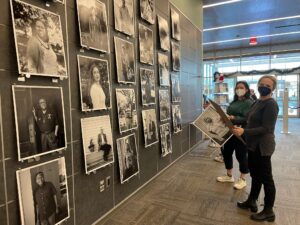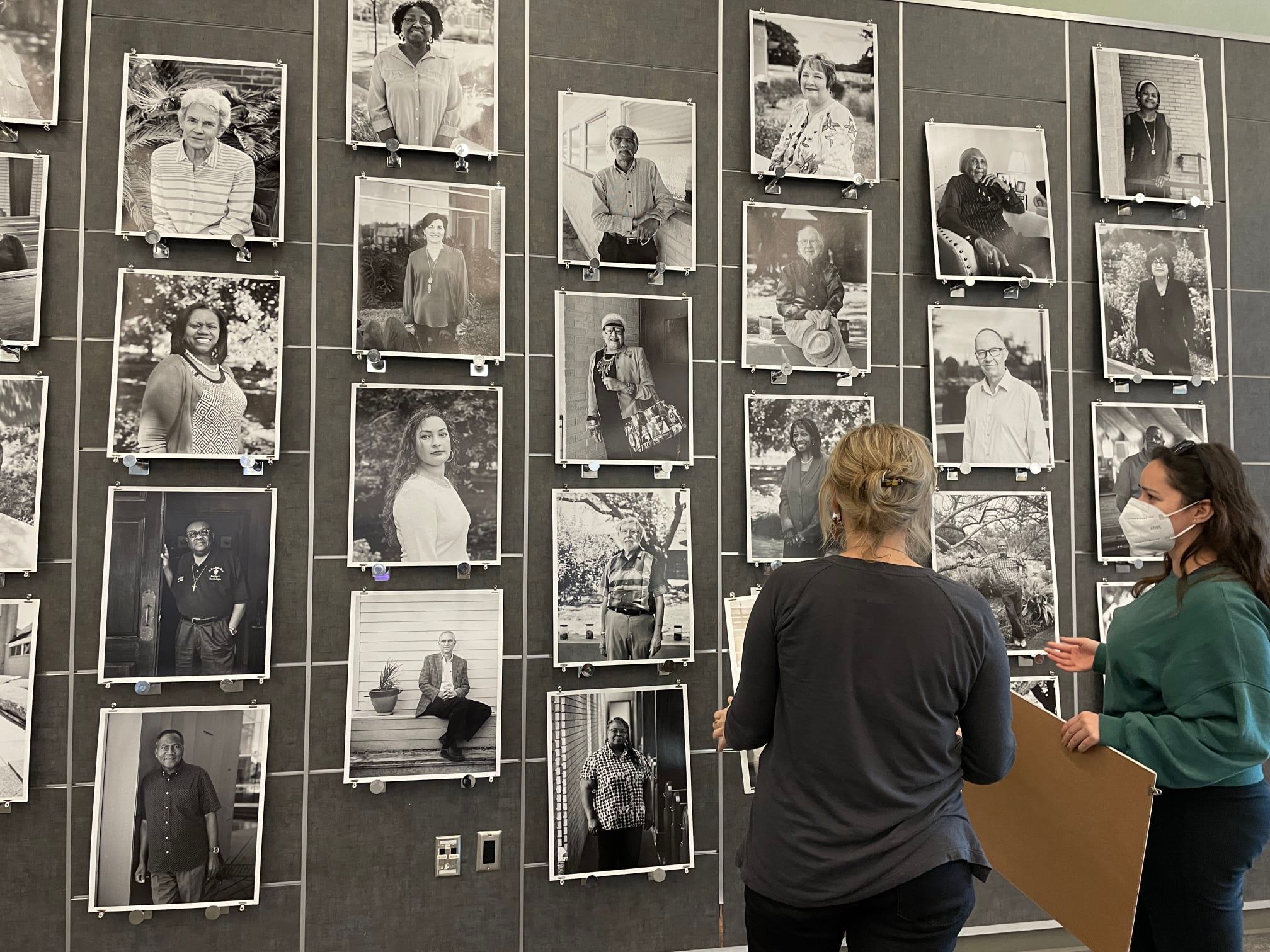Hear the stories that shape Baton Rouge at the ‘Toward a Larger Freedom’ exhibition
Louisiana is a state rich in culture and heritage. Whole families have lived on these same streets for generations. But unless someone sits down to chronicle these histories and turn them into memories, they risk disappearing forever.

That’s why Together Baton Rouge curated the interactive installation of oral histories “Toward a Larger Freedom: Ten Years of Citizen Power Organizing with Together Baton Rouge,” now in the final week of its display at the Main Library at Goodwood. Originally conceived as a celebration of the nonprofit’s 10th anniversary in 2020, plans for the exhibition took a back seat to COVID-19 until this winter, when visitors could finally feel safe to observe the towering grid of black-and-white portraits of local civic leaders, each face linked with one of the many TBR organizations that have left their mark on the city over the past decade. Beside each of the portraits taken by photographer Lily Brooks (who snapped more than a hundred local leaders over the course of many months), a QR code grants access to the subject’s own voice, narrating selections of life stories and personal experiences culled from interviews conducted by TBR members Phillip Norman, Abel Thompson and Maggie Conarro.
“Together Baton Rouge is made up of multiple member institutions, so we worked through those to identify the leaders in each institution who were heavily involved in TBR,” says Norman, who serves as a Serve Louisiana AmeriCorps member at Together Baton Rouge.
The stories not only symbolize the vital role citizens play in strengthening the culture and diversity of our state, but they also act as a reminder that the most essential members of our community are oftentimes the most humble. “It honors and celebrates a lot of people who have contributed greatly to our city, many of whom do a lot of work behind the scenes,” says Canarro. “And secondly, listening to the stories also serves as a mini history lesson about our city and region.”
Lily Brooks, who also teaches photography at Southeastern Louisiana University, is moved by the potential impact of the exhibition, and has spoken with her students about the way media and photographs can shape our ideas about politics and society. “We talk a lot about how representation—and who does the representing—can shift ideas about communities,” she says. “We live in a city that is truly diverse as far as race, economics, age and religion goes. I think there are a lot of opportunities for people of all different backgrounds to identify with the people on those walls.”
The exhibition ends January 31, but the content will remain available to listen via EBRPL’s archive or online at togetherbr.org.












